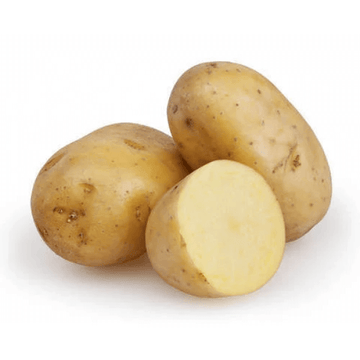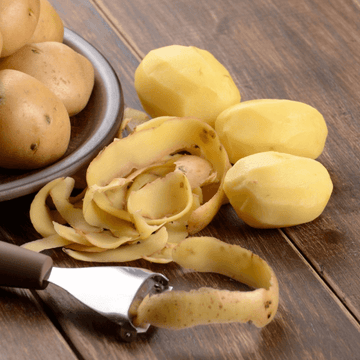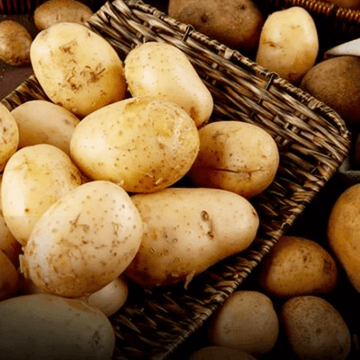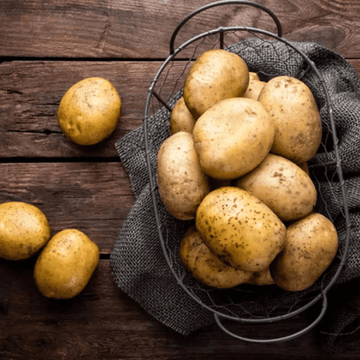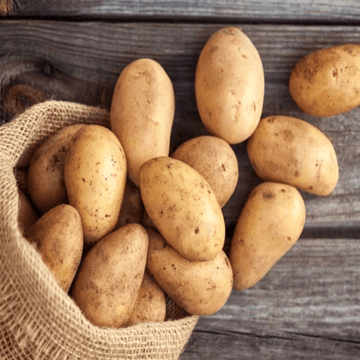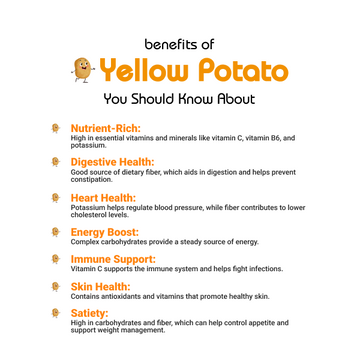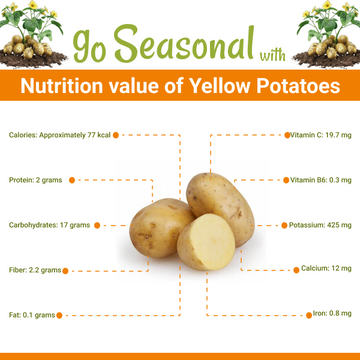Buy Yellow Potatoes(پیلے آلو)-1kg
Best Offer: 1kg
Quantity:
This product is currently out of stock, but you can place an order through WhatsApp. We'll try our best to make it available for you if possible
The potato, scientifically known as Solanum tuberosum, has a rich history that dates back over 8,000 years. It originated in the Andean region of South America, where it was first domesticated by the indigenous people of present-day Peru and northwest Bolivia. The Spanish conquistadors brought potatoes back to Europe in the 16th century, where it initially faced resistance but eventually became a staple food. The potato's ability to grow in diverse climates and its nutritional value led to widespread cultivation across Europe, North America, and beyond. Today, potatoes are one of the world's most important food crops, second only to rice in terms of human consumption...
Benefits of Potatoes:
-
Nutrient-Rich: Potatoes are a good source of vitamins C and B6, potassium, and fiber, providing essential nutrients for overall health.
-
Energy Boost: The carbohydrates in potatoes provide a quick source of energy, making them a staple in many diets.
-
Digestive Health: The fiber content in potatoes aids digestion and promotes a healthy gut.
-
Heart Health: Potatoes contain potassium, which helps regulate blood pressure and reduce the risk of heart disease.
-
Antioxidant Properties: Potatoes contain antioxidants like flavonoids, carotenoids, and phenolic acids that help protect cells from damage.
-
Supports Immune System: The vitamin C in potatoes boosts the immune system and helps the body fight infections.
Uses of Potatoes:
Culinary Uses
-
Boiled Potatoes: Often used as a side dish, in salads, or as a base for mashed potatoes.
-
Baked Potatoes: Popular as a hearty side or main dish, especially when topped with butter, sour cream, cheese, or other toppings.
-
Fried Potatoes: Includes French fries, potato chips, and hash browns, widely consumed as snacks or sides.
-
Roasted Potatoes: A favorite side dish, seasoned and baked until crispy.
-
Mashed Potatoes: Creamy and versatile, often served with gravy or as a component in dishes like shepherd's pie.
-
Potato Salad: A common dish in picnics and barbecues, typically mixed with mayonnaise, mustard, and various vegetables.
-
Potato Soup: A comforting and nutritious dish, often combined with other vegetables and meat.
-
Potato-Based Dishes: Includes dishes like gnocchi, pierogies, and various casseroles.
Industrial Uses
-
Starch Production: Potato starch is used as a thickener in foods, in adhesives, and in the paper and textile industries.
-
Alcohol Production: Potatoes are used to produce vodka and other distilled spirits.
Agricultural Uses
-
Animal Feed: Potato by-products and waste are often used as livestock feed due to their nutritional content.
-
Crop Rotation: Potatoes can be used in crop rotation to help maintain soil health and manage pests.
Non-Food Uses
-
Cosmetics: Potato extracts are used in some skincare products for their anti-inflammatory and skin-brightening properties.
-
Bioplastics: Potato starch is used in the production of biodegradable plastics.
Medicinal Uses
-
Home Remedies: Potatoes have been used in traditional medicine for their soothing and anti-inflammatory properties, such as applying potato slices to the skin to relieve burns and inflammation.
-
Digestive Health: Consumed for their fiber content to aid in digestion and prevent constipation.
Cultural and Educational Uses
-
Science Experiments: Potatoes are often used in educational settings to demonstrate principles of osmosis, energy storage, and the production of simple electrical circuits (e.g., potato batteries).
Nutritional Value of Potatoes (per 100 grams, boiled with skin)
-
Calories: 87 kcal
-
Protein: 2 g
-
Fat: 0.1 g
-
Carbohydrates: 20 g
-
Sugars: 1.2 g
-
Dietary Fiber: 1.8 g
-
Vitamins
-
Vitamin C: 13 mg (22% of the Daily Value, DV)
-
Vitamin B6: 0.3 mg (15% DV)
-
Folate (Vitamin B9): 16 μg (4% DV)
-
Minerals
-
Potassium: 379 mg (11% DV)
-
Magnesium: 21 mg (5% DV)
-
Phosphorus: 44 mg (4% DV)
-
Iron: 0.8 mg (4% DV)
-
Calcium: 8 mg (1% DV)










